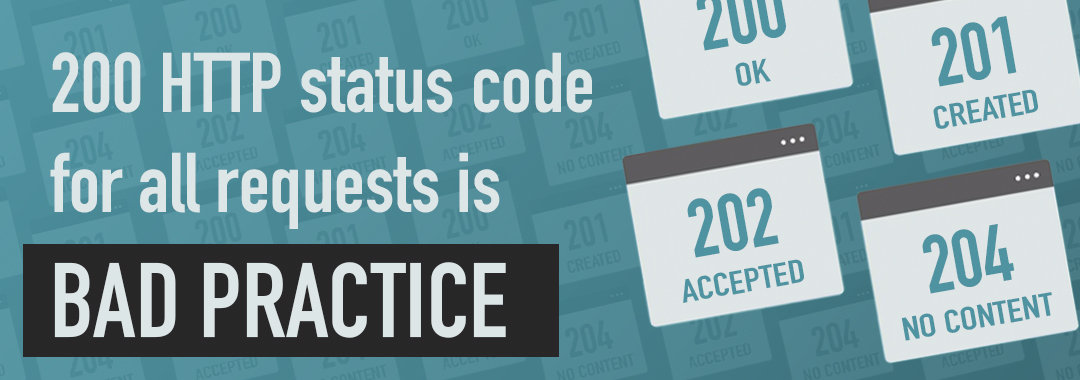
Avoid Using 200 HTTP Status Code for All Successful Responses
3 minutes to read

As a developer, it can be tempting to use a single HTTP status code, such as 200, for all requests in your API. However, this can lead to a number of issues related to clarity, caching, security, and interoperability. In this article, we’ll take a closer look at why using a generic status code for all requests is considered bad practice and why it’s important to use the appropriate status code for each specific scenario.
Here’s a more in-depth analysis of the differences and benefits of HTTP response status codes 200, 201, 202 and 204:
1. 200 (OK): This is the most common HTTP response status code for successful requests. It indicates that the request was successful, and the server is returning the requested resource(s) in the response body. The 200 status code is typically used for GET requests, where the client is requesting information from the server, but it can also be used for other types of requests.
The benefits of using the 200 status code include:
- Clarity: Using the 200 status code makes it clear to the client that the request was successful and that the server is returning the requested resource(s).
- Compatibility: The 200 status code is supported by all major HTTP clients and servers, so it’s a safe choice for most use cases.
- Caching: The 200 status code can be used with caching mechanisms to improve performance by allowing the client to reuse a previously cached response.
2. 201 (Created): This status code is used to indicate that a new resource has been created on the server as a result of the request. It’s typically used with POST requests, where the client is submitting data to the server to create a new resource.
The benefits of using the 201 status code include:
- Clarity: Using the 201 status code makes it clear to the client that a new resource has been created on the server as a result of the request.
- Idempotence: The 201 status code is idempotent, which means that the same request can be made multiple times without creating duplicate resources.
- Compatibility: The 201 status code is supported by all major HTTP clients and servers, so it’s a safe choice for most use cases.
3. 202 (Accepted): The 202 status code is used to indicate that a request has been accepted for processing but has not yet been completed. This is often used in scenarios where the request is expected to take some time to complete, such as when a background process or long-running task is being performed.
One of the main benefits of using the 202 status code is that it allows the server to immediately acknowledge receipt of the request, even if it can’t yet provide a final response. This can improve the user experience by providing immediate feedback that their request has been received and is being processed.
Additionally, the 202 status code can be useful for reducing load on the server by allowing it to accept requests and process them asynchronously. This can be particularly useful in high-traffic scenarios where a large number of requests may be received simultaneously.
Overall, the 202 status code is a useful tool for improving the user experience and server performance in scenarios where long-running processes are being performed.
4. 204 (No Content): This status code is used to indicate that the server has successfully processed the request, but there is no response body to return to the client. It’s typically used with DELETE requests, where the client is requesting the server to delete a resource.
The benefits of using the 204 status code include:
- Efficiency: Using the 204 status code saves bandwidth and processing time by not returning a response body to the client.
- Clarity: Using the 204 status code makes it clear to the client that the request was successful and that the resource has been deleted from the server.
- Compatibility: The 204 status code is supported by all major HTTP clients and servers, so it’s a safe choice for most use cases.
In general, it’s good practice to use the appropriate HTTP status code for each specific scenario, rather than using a generic status code like 200 for all requests. This can help ensure clarity, security, and interoperability in your API.
